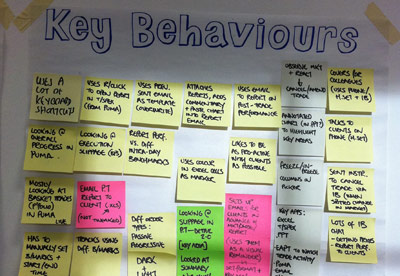— The below is a short article recently written in response to a Westminster Health Forum event on 22nd May 2012 —
Recent health informatics events including May’s Westminster Health Forum have reinforced the challenges in connecting grand visions of simplicity, transparency, security, accuracy and portability with the complexity of developing clinical systems that are safe, efficient, and supportive of clinicians within the NHS.
To pull NHS Informatics into the 21st century, specialist designers must play a significant role in an integrated care plan to shape new technology, ease cultural change and aid clinical engagement.
The NHS already benefits from design investment
The DH already uses Graphic Designers in communicating behavioural change messaging. Trusts invest millions of pounds in buildings designed by Architects and styled by Interior Designers. Medical devices have always had Industrial Designers ensuring great ergonomics, durability and precision. Public-facing sites and apps like NHS Direct, NHS Choices, Boots Web MD and Wellnote demonstrate greater levels of design quality. Meanwhile the Design Council has kick-started initiatives with multi-disciplinary design teams to reduce aggression in A&E and improve living with dementia.

Product and Service Design agencies such as PDD (www.pdd.co.uk) are already embedded in the design of services and physical devices used in healthcare
Healthcare isn’t blind to the value of design, but Healthcare IT’s design vision is impaired – focusing too much on the patient or carer and not enough on the clinician.
There is a lack of good design in clinical systems
Talented and time-poor professionals have to use clinical systems day-in, day-out. They have no choice. With badly structured forms, rigid workflow rules and a focus on adding features rather than enhancing usability, these poorly designed clinical systems can impede the delivery of care and bedside manner.
Given the criticality of their interactions, and the risks associated with error clinicians need and deserve better – to aid better clinical care for patients and offer some hope of delivering on the DH’s patient experience aspirations.
Clinical systems need talented User Experience designers throughout system delivery
In other sectors, ‘User Experience’ (UX) design teams complement and lead developers in the delivery of quality solutions whether they call themselves Information Architects (IA), Interaction Designers (IxD) or Visual Designers (VisD). They advocate the user (eg, clinician, manager, or patient) to ensure that services meet their needs, fit their workflow and empower them to do their job better. The Microsoft Common User Interface (CUI) programme used design teams to develop guidance that will be used over the coming years, but guidelines aren’t enough for developers, clinicians or managers without skills in designing user interfaces. Healthcare IT needs specialist designers throughout system delivery, in a similar way to a patient needing trained clinicians through a recovery; not just medications and a pathway used by a passionate amateur.
‘User Experience’ designers can help system vendors, trusts, and central programmes to define the design challenges and technology opportunities in different ways to clinicians, patients, managers, developers or management consultants. A User Experience Designer is trained to immerse themselves: to observe actual practice and listen with their eyes, as much as their ears. However, where they excel is in translating challenges into tangible solutions that are compelling, usable, and better fit the way people behave.

A User Experience Designer is trained to immerse themselves: to observe actual practice and listen with their eyes, as much as their ears.
Through observational research, iterative designing and prototyping solutions with actual users and stakeholders, they help to:
• Find better ways to engage clinicians, patients and managers in the development process
• Envision new products and services that better meet the needs of clinicians and patients
• Create high quality user interfaces that help capture data quicker, easier, and more accurately, before presenting data back in clear and enlightening formats
• Design systems that support the way people really work and behave, amplifying skills, not forcing them down unnatural and less clinically effective routes